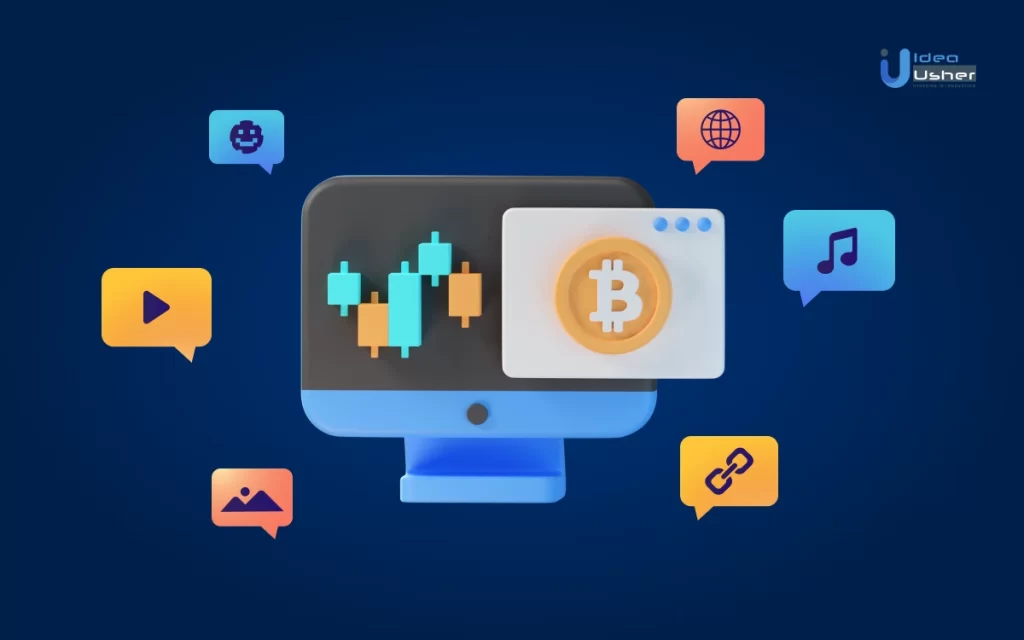Blockchain isn’t just a digital playground—it’s a tool you can use to make real-life stuff easier, safer, and smarter. Beyond crypto trading or online games, this tech can help you move money, secure your belongings, and even grow your food with a twist. Here are five physical-world use cases you can try today, no tech degree needed—just a phone, a wallet, and a bit of curiosity.
1. Track Your Home-Grown Food’s Journey
Ever grown veggies in your backyard or bought from a local farmer? Blockchain lets you trace every step of that food—from seed to plate—giving you a story you can share or sell. Platforms like AgriLedger or IBM’s Food Trust let you log details (e.g., planting date, harvest time) on a blockchain for a few bucks using a simple app. Scan a QR code on your tomato haul, and buyers at a farmers’ market can verify it’s organic or home-grown—immutable proof no middleman can fake. In 2024, Walmart used this to track lettuce in seconds, but you can do it too: spend $1–$5 to register a batch on Tezos or Ethereum, slap a sticker on your produce, and build trust with every bite.
2. Send Money Globally, Cheap and Fast
Need to send cash to a friend overseas without losing half to bank fees? Blockchain makes it a breeze with cryptocurrencies like Bitcoin, Ethereum, or stablecoins like USDC. Using a wallet app like Coinbase or Trust Wallet, you can transfer funds in minutes—often for less than a dollar—compared to days and $20+ via traditional wires. In 2023, remittances via blockchain hit $100 billion, per Statista, as migrants ditched Western Union for platforms like Stellar or Ripple. All you need is a smartphone, their wallet address, and some crypto. Walk to a local crypto ATM (30,000+ worldwide by 2025), cash out your digital coins, and hand-deliver the bucks—it’s your borderless courier service.
3. Verify Your Stuff’s Authenticity
Worried that designer bag or vintage vinyl might be fake? Blockchain’s got your back with supply chain tracking. Brands like Louis Vuitton and IBM’s Food Trust use it to log every step of a product’s journey—immutable proof it’s legit. As an individual, you can tap in: scan a QR code with an app like VeChainThor to check a handbag’s history, from factory to store. Or, selling your own gear—like a guitar you restored? List it on Origin Protocol for under $5, printing a blockchain-verified tag you stick on the case. Buyers at a flea market can scan it, ensuring your story holds up. It’s physical proof you can hold, no detective skills needed.
4. Rent Out Your Spare Gear Securely
Got a bike, camera, or lawnmower gathering dust? Blockchain’s smart contracts let you rent it out IRL without trusting strangers blindly. On Ethereum or BNB Chain, set up a contract with a tool like Remix—say, “$10 unlocks my bike lock for 24 hours”—for a few bucks in gas fees. Your renter pays via a wallet, and a Bluetooth smart lock (like those from Slock.it) releases the bike when the blockchain confirms. In 2023, peer-to-peer rentals hit $2 billion on blockchain platforms, per Deloitte. Meet at a park, hand over the gear, and let the chain handle the rest—your stuff’s safe, and you pocket cash, all in the real world.
5. Prove Ownership of Your Physical Treasures
Want to lock down ownership of that family heirloom or rare comic book? Blockchain can tag it with a digital deed you can show or sell. Using a service like Verisart or POAP, snap a photo of your grandpa’s watch or a first-edition Spider-Man, link it to an NFT for $2–$10 on Polygon, and print a QR code sticker. Stick it on the item or its box—now, anyone with a phone can scan and verify it’s yours, forever etched on-chain. In 2024, Christie’s auctioned physical art with blockchain certs, but you can do it at home. Hand it to a buyer or heir with confidence; it’s your tangible legacy, secured digitally.
Blockchain Meets Your Everyday Life
These five use cases—tracking food, sending cash, verifying goods, renting gear, and proving ownership—bring blockchain off the screen and into your hands. All it takes is a smartphone, a basic wallet (MetaMask works), and a few dollars in crypto to start. In 2025, blockchain’s real-world reach is booming—$67 billion in market value, says MarketsandMarkets—and you’re not just a bystander. Whether you’re at a market, a meetup, or your garage, this tech amps up what you already do. So, grab an item, scan a code, or send some coins—what’s your first real-life blockchain move?
